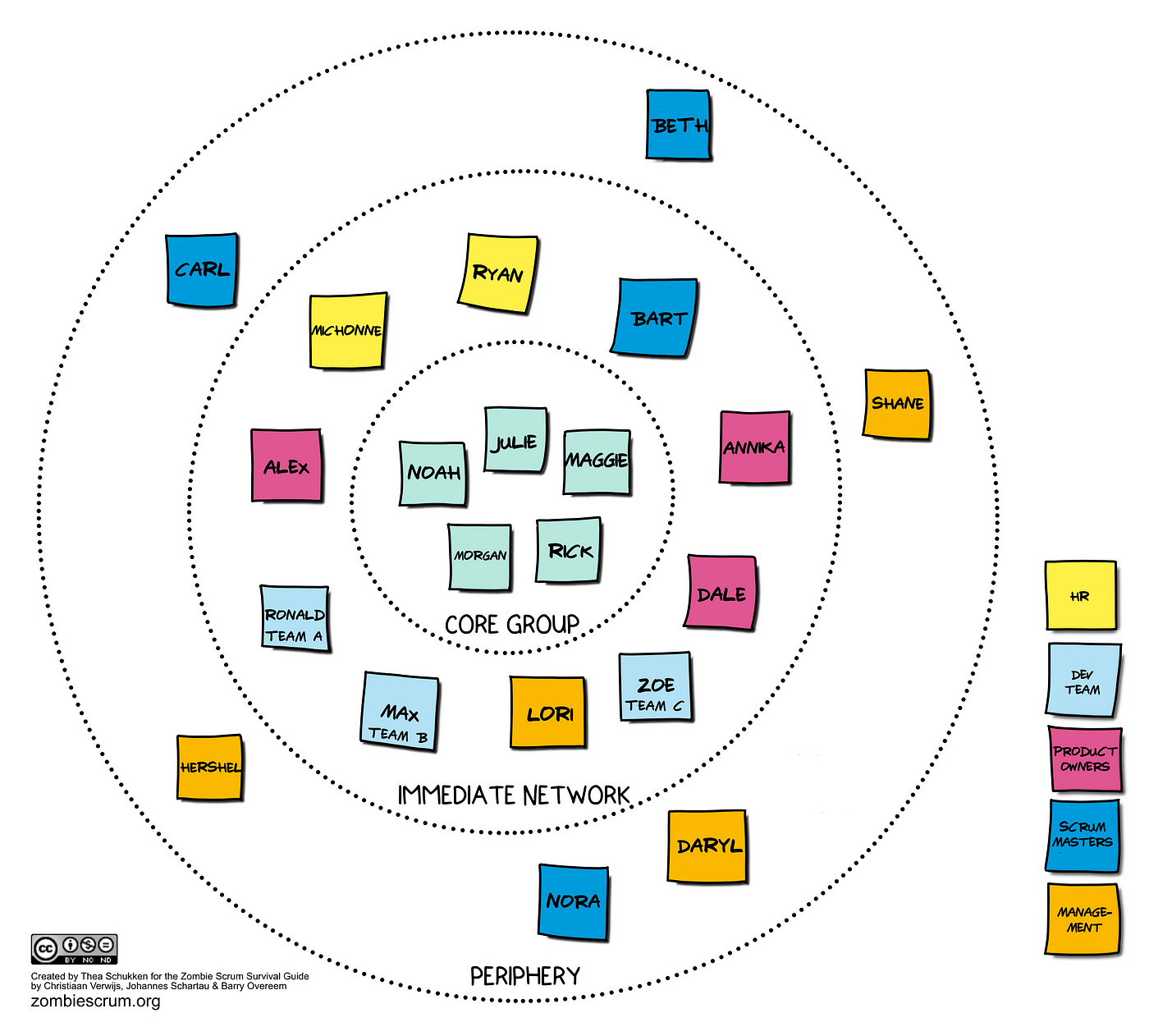
In our book — the Zombie Scrum Survival Guide — we dive deep into what causes Zombie Scrum; something that looks like Scrum from a distance, but lacks a beating heart. We also offer 40+ experiments to recover from Zombie Scrum. This experiment is one of them. Download the paper “10 Powerful Experiments to Overcome Zombie Scrum” to get even more inspiration on how to fight Zombie Scrum.
Changing the environment of Scrum teams can be difficult when you’re trying to do it alone. Especially in large organizations where the people with influence are difficult to get in touch with. When working to remove an impediment, you should first find people in your organization who are facing similar impediments and work together to remove them. This experiment is about leveraging the informal and formal networks in organizations to create change. It is based on the Liberating Structures “Social Network Webbing” and “1–2–4-ALL”.
“When working to remove an impediment, you should first find people in your organization who are facing similar impediments and work together to remove them.”
Required skill
Finding creative ways to expand the network is challenging, especially in large, complex organizations.
Impact on survival
We’ve seen significant shifts when people start tapping into formal and informal networks to create change.
Steps
To try this experiment, do the following:
- Start by inviting Scrum Masters, Product Owners, and Developers from different teams who are eager to start removing organizational impediments to Scrum.
- First individually (1 min), then in pairs (2 min), and in groups of four (4 min), ask people to answer “What are the biggest impediments we face? What in this organization is making it difficult for us to work empirically?”. Collect the biggest impediments.
- Create a wall or use the floor for the social map. Bring stickies in different colors.
- Start creating the social network map by asking the participants to write down their names on stickies. Put them in the center of the social network. These people are the “core group”.
- First individually (1 min), then in pairs (2 min), and then with another pair (4 min), ask people to identify the key groups or departments you need support from to remove impediments. Limit to a maximum of ten groups and create a legend where each has a different color or symbol (10 min).
- Invite everyone to write down the names of people they know in the organization on separate stickies, making use of the legend. Ask people to place the stickies on the map based on how close or distant they are to the people currently present (10 min).
- First individually (1 min), then in pairs (2 min), and then with another pair (4 min), ask people to answer “Whom would you like to include to remove the impediments we’re facing? Who has influence, a fresh perspective or the skills we need?”. Write down the names on separate stickies, making use of the legend. Map the stickies on the network based on their current and desired involvement. Update the legend as new groups are identified (15 min).
- Ask everyone to take a look at the map that is emerging and ask: “Who knows whom? Who has influence and expertise? Who can block or boost progress?”. Draw lines between people and groups to connect them based on the answers (15 min).
- Use “15% Solutions” to generate strategies for involving influential people that are distant or to work around blockages. How can you leverage your network to involve the right people? This can be as simple as making a phone call, sending an email, or asking someone closer to you to make the connection. You can use the experiment “Share An Impediment Newsletter Throughout The Organization’’ to inform people in the network.

An example of a Social Network Web.
Our findings
- Pay close attention to black holes in the map. These are the departments or groups you need support from, but where you don’t know anyone (directly or indirectly).
- This experiment works best when you repeat it every so often. Try to expand your “core group” with people who are willing to help. As your network grows, it becomes progressively easier to remove blockages or boost progress.
Looking for more experiments?
Aside from a deep exploration of what causes Zombie Scrum, our book contains over 40 other experiments (like this one) to try with your Scrum team. Each of them is geared towards a particular area where Zombie Scrum often pops up. If you’re looking for more experiments, or if these posts are helpful to you, please consider buying a copy.

Order your book directly from us for some nice extras.
